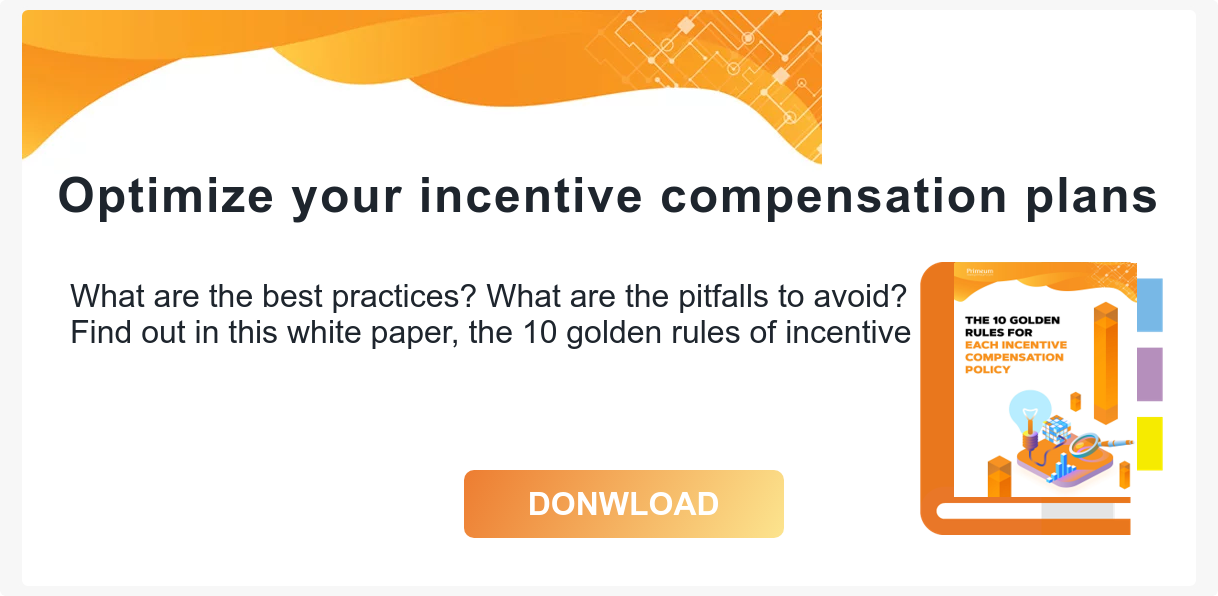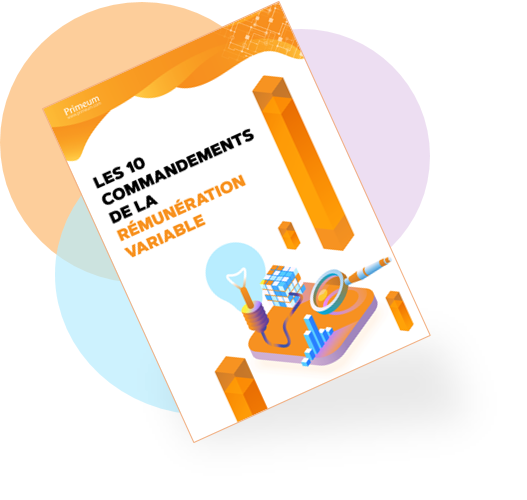The business performance of a company is based on multiple criteria such as management style, customer relationship management and the quality of the service provided, but also the effectiveness of incentive compensation schemes and employee motivation.
What is the best way to define business performance? What can drive improvement? From performance indicators to technological innovations applied to sales and recognition at work, find out in this article what business performance is and how it relates to corporate strategy.
What is business performance?
Performance as a reflection of commercial effectiveness
Commercial effectiveness is the ability of a company, a department or an individual to achieve its or their objectives and expected results. The notion of commercial effectiveness thus covers issues of costs, deadlines, quality and profitability. It is measured using qualitative and/or quantitative KPIs (key performance indicators)
The nature of the business sector in which the company operates, the economic context, the seasonality or the strength of the competition in the market explain the KPIs directly linked to commercial effectiveness in terms of turnover, the number of sales, market shares and margins etc.
Business performance, which is closely tied to commercial effectiveness, is determined by the ability of a company to implement optimal organisation with the aim of offering a product or service that meets the expectations of consumers and customers.
Qualitative indicators enrich the bonus schemes of sales staff
Sales staff are primarily assessed on their ability to sell, and many companies still choose to follow convention in their incentive compensation policy towards them. Nevertheless, in the search for business performance, more and more companies are interested in introducing more qualitative elements in the evaluation grid of salespeople.
As such, although some companies are still very much in favour of quantitative evaluation criteria, some of them want to guide sales teams towards improved quality. Moreover, it would be counterproductive to pit the role of qualitative and quantitative criteria against one another. In both cases, the role of incentive compensation, whether based on purely qualitative or purely quantitative criteria, is to achieve greater commercial effectiveness and individual and/or collective performance.
From customer satisfaction levels to the number of complaints, the nature of the customer relationship, the share of repeat business and customer loyalty etc, qualitative business performance indicators are numerous and can be a fantastic tool in terms of understanding the work of a salesperson globally and rewarding virtuous behaviour, but also identifying possible areas for improvement. The purpose of these qualitative criteria is in fact to create the conditions for the economic successes of tomorrow, which are therefore more quantitative.
The pillars of business performance
Remuneration: fixed and incentive compensation
Remuneration is based on a package made up of fixed and incentive compensation. The fixed component of the remuneration rewards experience and competence, while the incentive component, which specifically comprises target-based bonuses, rewards performance. Also not to be forgotten are benefits in kind, which can be significant (a company car, phone, computer and lunch vouchers etc.).
L'estime de soi et la reconnaissance au travail
According to a recent study by Bloomatwork.com, more than seven out of 10 employees believe they are underappreciated at work and 54% say they are unhappy with the recognition policies offered in-house to meet their need for recognition and visibility at work.
The need for self-actualisation is at the top of Maslow’s hierarchy of needs, followed by the need for esteem and recognition from others, which is found in the professional world. Valuing everyone’s efforts and distinguishing individual and/or collective performance helps keep teams motivated and committed. Beyond the financial aspect, which has an important part to play in the perception of recognition at work, the trust and consideration shown and given to employees also play a significant role. Indeed, including employees in strategic decision-making, for instance, values them and encourages them to invest more in the company’s vision.
An opportunity for training and development
Continuous training is an argument in favour of recruitment, but also building team loyalty. Like support functions, salespeople aspire to develop professionally, in terms of both horizontal professional mobility (broadening of the scope of their assignments) and vertical mobility (taking on new responsibilities). A real training and support plan for talents therefore needs to be implemented to succeed in retaining them. The professional development of employees is also a strategic lever for the company’s development: creativity, initiative and skills development must be given sincere consideration by HR teams.
Incentive compensation, one of the keys to renewed commercial effectiveness
An effective balance between fixed and incentive compensation
The overall compensation package must be balanced between fixed and incentive compensation. According to a recent Maesina International Search study, bonuses represent 20% to 25% of total remuneration in BtoC and can reach 50% in BtoB. They are chiefly designed to encourage sales staff to invest and engage in the short term and to retain these employees in the long term.
An attractive compensation package therefore depends on there being a fair balance between the fixed and incentive components. Too many incentive components leads to quick results, but also presents a significant risk in terms of the quality of the customer relationship on the one hand, and the stability of teams on the other, who may quickly feel demotivated if their targets are too ambitious. Furthermore, opting for a remuneration system consisting solely of a fixed salary would have no incentive effect on the performance of the teams and their desire to reach and exceed their targets. Consequently, an effective compensation ratio is generally around 70% to 80% fixed and 20% to 30% incentive in BtoB and between 25% and 35% incentive in BtoC.
Commercial effectiveness indicators
Performance indicators can be qualitative or quantitative. Also known as KPIs (key performance indicators), they enable a company to manage its sales strategy through the development of different dashboards. From the conversion rate to the customer loyalty rate, customer acquisition cost and sales analysis, but also turnover achieved by a salesperson, there are many KPIs.
It is important to remember that business performance can also be defined as the ability of a company to generate maximum commercial profitability from the material and human resources at its disposal. While it is relatively straightforward to measure quantitative KPIs, it remains a challenge for companies to fully understand qualitative performance indicators. However, companies are no longer hesitant to introduce incentive compensation criteria for all functions, including support functions, for which it is increasingly common to define performance measurement criteria, both quantitative and qualitative.
Enabling salespeople to perform through qualitative indicators
The introduction of qualitative criteria in the calculation of incentive compensation for sales staff is a trend that has been observed in recent years. However, most companies continue to objectify their sales staff solely based on quantitative criteria. As such, salespeople are generally expected to be paid on the basis of turnover, margins achieved or sales volumes.
Encouraging sales staff to offer a high-quality service fosters greater customer loyalty and naturally develops repeat business to the detriment of one-shots. Thus, introducing quantitative criteria into the incentive compensation of sales staff by taking into account elements that objectively evaluate the quality of the customer relationship seems to be an effective way of developing team motivation, ultimately, teams’ commercial performance.
Cross-selling and upselling: two key sales concepts
Cross-selling and upselling are sales techniques aimed at boosting sales figures and business performance. What is the basic idea behind them? Cross-selling involves encouraging customers to buy more related products, while upselling is when customers are encouraged to buy more expensive products. These techniques, which are popular with major online retailers such as Amazon, are now part of every salesperson’s arsenal for increasing their average turnover.
Upselling involves offering the customer a product which is similar to the one they want to buy, but more expensive than their initial choice. In the tech world, it is common to see salespeople and CSMs (customer success managers) regularly trying to sell new features that will improve the user experience of a software package or computer application. CSMs are only objectified based on upselling, which takes place after the salesperson has conducted the sale.
Cross-selling, however, is a more transversal sales technique which involves combining several complementary products or services. In the retail sector, it consists of selling customers products they might need, taking into account the purchase they have just made. This system of cross-selling is widespread in online shops, particularly Amazon. If we take the example of Tech, cross-selling consists, for example, in selling software with a second tool that will offer a complementary service to the first one, in a grouped manner. This approach encourages the different market players who offer complementary services to work together and propose a common service offer.
Innovations for business performance
The value of CRM
To ensure that the leads collected are optimised, sales staff have to enrich their CRM, or customer relationship management, in real time and with great accuracy. To avoid losing business information, and to get the maximum benefit from the mass of information managed by the system, sales representatives have to make good use of CRM and understand the full implications of a well-stocked customer database.
Indeed, a lead is only usable in a short time, so if the salesperson does not quickly contact the customer who has asked them about a specific point, the conclusion of the sale may be compromised. Today, sales staff are over-informed and have a new position with clients, being able to predict which company will potentially be interested in their services. With appointments, phone interviews, notes, follow-up measures and sales proposals etc. to manage, the real-time control and centralisation of business information are essential conditions for the success of a sales strategy.
Linkedin Sales Navigator
LinkedIn offers a clear competitive advantage with LinkedIn Sales Navigator, which allows salespeople to better generate contacts and find leads. In addition, a French start-up, Datananas, has started collecting leads by crawling LinkedIn pages to export lists of prospective customers, emails and phone numbers directly from the professional network.
It is also important to note that according to a recent study by Forbes, 90% of decision-makers say they never reply to non-personalised emails and, conversely, salespeople who use social selling are 20% more effective than others. Why is this? Because social selling takes into account a very important factor: most of the buying decision is already made before the prospective customer contacts a salesperson. LinkedIn is therefore useful for collecting information before any canvassing, sending emails via an internal messaging system, finding the right contacts through the advanced search feature, keeping an eye on your companies by joining discussion groups, but also, and above all, being visible on the market.
Other innovations (big data, marketing automation, tracking tools and business social networks)
According to the website sendinblue.com, marketing automation refers in the broadest sense to the automation of marketing campaigns triggered by a set of predefined conditions and based on user behaviour. It is possible to automate the sending of emails, text messages, contact segmentation, lead scoring or lead nurturing.
As such, after subscribing to a service or making a documentation request, filling up a shopping backet or making a purchase, or interacting in any way online, the potential or current customers can be integrated into automated email paths and receive a sequence of multiple messages adapted to their needs and programmed according to their interactions.
There are other tools that can be used to obtain information about potential customers and to broaden your base of prospective customers. This is particularly true of webinars or web conferences. More and more companies are deciding to organise these alone or in groups to gather as much information as possible about the participants and possibly prospect them afterwards.
Finally, business social networks and information tracking and sharing tools allow salespeople to develop collaborative projects. According to the moderator’s blog, 58% of large companies in France now have their own business social network, with 67% of the managers surveyed also saying they understood the contributions these tools can make. Some of these contributions include facilitating open discussion (for 75% of respondents), mutual support (72%), the emergence of new ideas (72%), the coordination of activities (62%), decision-making (62%) and the development of each person’s skills (59%).
The management of bonus schemes, a major advantage needed for better business performance
Communication at the beginning of the cycle with SMART objectives
Communicating at the beginning of the performance cycle is essential to provide the necessary visibility to teams. The kick-off meeting proposed by the sales departments at the beginning of the performance period provides a reminder of the company’s strategic priorities and national sales objectives, while clarifying the rules for calculating incentive compensation according to individual profiles.
Monthly follow-up meetings
Monthly follow-up meetings allow managers to check up on the morale of teams, to conduct an intermediate review of the achievement of targets, but also to readjust them if need be, especially if the market and the environment are particularly unfavourable. These follow-up meetings are essential to better understand how motivated teams are, problems they are facing and any difficulties they may have. These times of discussion are also instrumental in enabling mutual support, establishing connections and sharing good business practices.
Intermediate bonus calculations
The automation of bonus calculations grants companies quick access to intermediate bonus levels, meaning they can make them available to employees during the performance cycle. In this way, salespeople can see their earned bonuses in real time and understand both under- and over-performance to better drive performance throughout the cycle.
Furthermore, the provision of interim bonuses also improves the use of a company’s bonus scheme and the company’s target and performance strategy. It should be noted that an interim calculation is only effective if it is fair and shared during the performance period.
Giving everyone the possibility to project their bonuses
Sales staff will be more motivated if they can project their future earnings. In companies that do not have a simulator in place, it is common to find “home-made” incentive compensation calculation matrices made by the employees themselves to simulate their incentive compensation. These matrices attempt to reproduce the bonus scheme, but often contain errors, which can lead to disappointment. Salespeople who can check with a simulator how much they can earn will naturally be more inclined to aim for high performance and to achieve their targets.
Equipping yourself with a tool to energise communication about bonuses
There are tools that enable the comprehensive management of incentive compensation, from the initial disclosure of the scheme and targets to the final communication at the end of the cycle. These digital tools include a simulator with bonus gauges showing the employee where they stand and the amount that can be earned by predicting performance.
This tool provides the right calculation at the end of the performance period and highlights the employee’s real performance. The latter can then simulate their future bonuses according to their predicted performance for the following periods.





